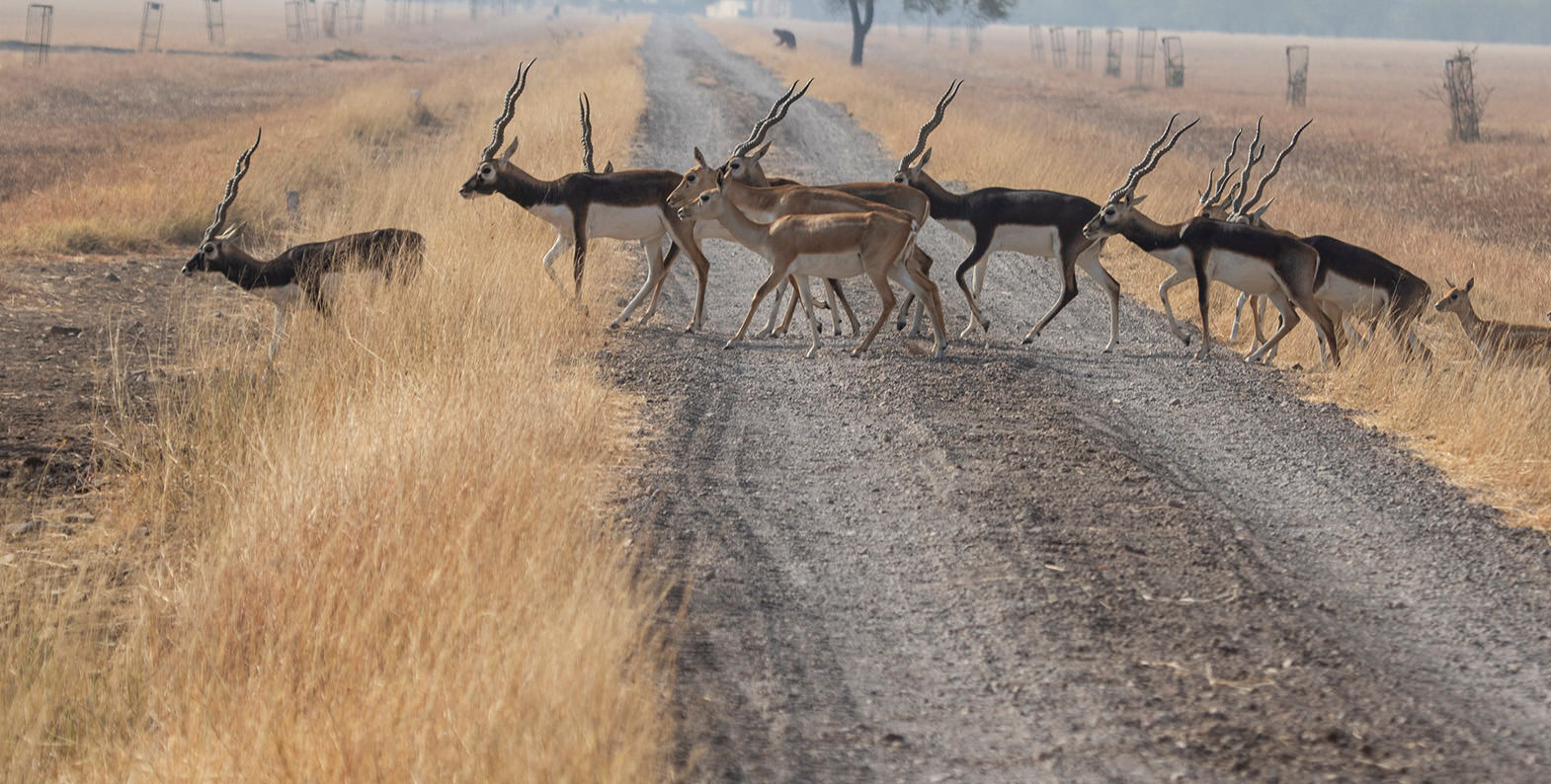Blackbuck National Park at Velavadar is situated in the Bhavnagar District of Gujarat state, India. Established in 1976 in the Bhal region of Saurashtra, the park is located around 42 km from the district headquarters city of Bhavnagar, adjoining the coasts of the Gulf of Khambhat on the south, it is spread over an area of 34.08 km2, which was primarily a "vidi" (grassland) of the maharaja of the princely state of Bhavnagar for hunting the blackbucks with his famous hunting cheetahs. On the northern side, it is surrounded by reserve forest and agriculture fields. The national park has been classified as 4B Gujarat-Rajwada biotic province of semi-arid bio-geographical zone.
Flat land, dry grasses and herds of antelope have always attracted visitors to this park which has a grassland ecosystem. Successful conservation programs for the blackbuck, wolf and lesser florican (a bustard) are ongoing. Considered to be an endemic Indian species, the lesser florican, which once lived throughout the country, has become endangered in recent decades. Today, the largest population is in this park. Local wolf numbers are increasing, as are striped hyena, with sightings quite frequent during daylight. There is a very good no. sighting of Indian Fox & Jungle cat in the park.
This small part of Bhal region (34.52 sq.km.) of Saurashtra, which was declared as Blackbuck National Park in July 1976, is an area of open grassland. The sanctuary has been declared primarily for Blackbucks. The beauty of the grassland is enhanced by the movements of Blackbucks and Blue bulls, which one can see from long distances. The large herds of blackbucks are conspicuous by its presence in this grassland habitat.

















